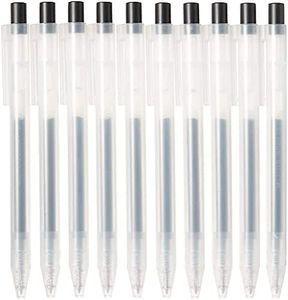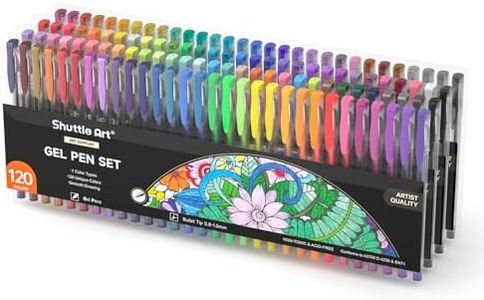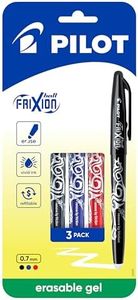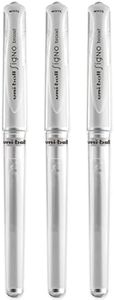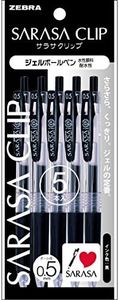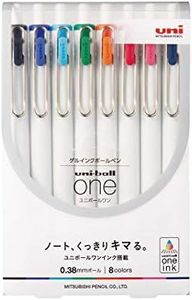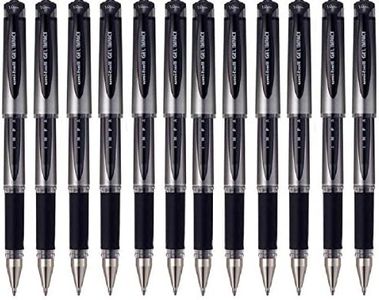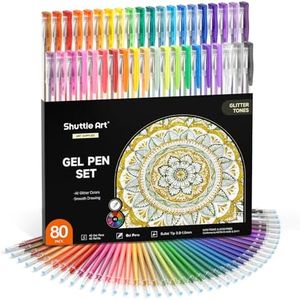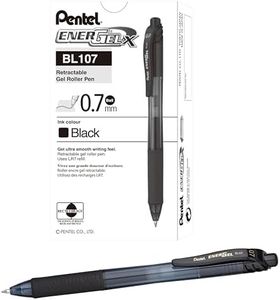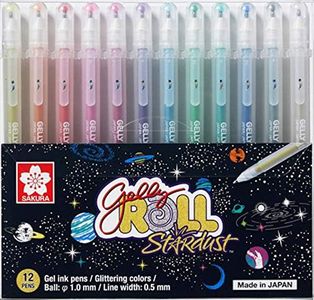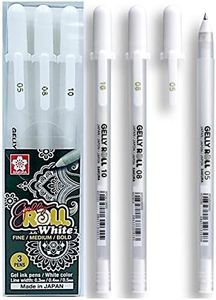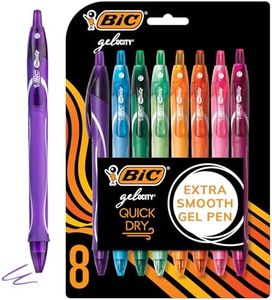We Use CookiesWe use cookies to enhance the security, performance,
functionality and for analytical and promotional activities. By continuing to browse this site you
are agreeing to our privacy policy
10 Best Gel Pens
From leading brands and best sellers available on the web.By clicking on a link to a third party's website, log data is shared with that third party.
Buying Guide for the Best Gel Pens
Choosing the right gel pen can make a big difference in your writing, drawing, or note-taking experience. Gel pens are loved for their smooth ink flow and vibrant colors, making them a popular choice for a variety of tasks, from paperwork to art projects. To find the pen that best suits your needs, it's important to understand the key features that affect how the pen writes, feels, and lasts. Knowing what to look for will help ensure you enjoy every stroke and achieve the results you want.Tip SizeTip size, often measured in millimeters, determines how thick or thin the line will be when you write. Smaller sizes, like 0.3mm or 0.5mm, make fine, precise lines ideal for detailed work or small handwriting. Larger sizes, such as 0.7mm or 1.0mm, produce bolder, thicker lines that are great for making your writing stand out or for coloring. To pick the best tip size, think about how small or large you write, the type of work you do (like note-taking vs. coloring), and whether you prefer sharp precision or bold expressions.
Ink Type and ColorThe quality and color of gel ink can affect your writing experience. Some inks are more vibrant or darker, while others feature special effects like metallics, pastels, or glitter. Standard black or blue inks are common for school or office use, while colored and specialty inks are great for art or creative projects. Think about whether you need ink that stands out on the page, matches a certain theme, or offers a unique aesthetic, and also consider if you prefer quick-drying inks to avoid smudging.
Comfort and GripThe comfort of holding a gel pen can make long writing sessions much easier. Some pens have a soft, rubbery grip to reduce hand fatigue, while others have a slimmer or more rigid design. If you write for long periods, look for pens with cushioned grips. If you have smaller hands, a slim-bodied pen may feel better. To choose the right grip, think about how the pen feels in your hand and whether you often feel discomfort after writing.
RefillabilitySome gel pens are refillable, which means you can replace the ink insert when it runs out, while others are disposable. Refillable pens are more sustainable and can be cost-effective over time, especially if you write a lot. If you want to reduce waste or tend to run through ink quickly, a refillable pen can be a better option. Otherwise, disposable pens might be convenient if you use them infrequently or like to change pens regularly.
Drying Time and Smudge ResistanceDrying time refers to how quickly the ink sets on the paper. Faster-drying inks are important if you're left-handed or tend to drag your hand over what you've written, as they help prevent smudging. If you often notice ink smears on your notes, look for pens that advertise quick-drying or smudge-proof ink. If smudging isn't a problem for you, this feature may not be a priority.

